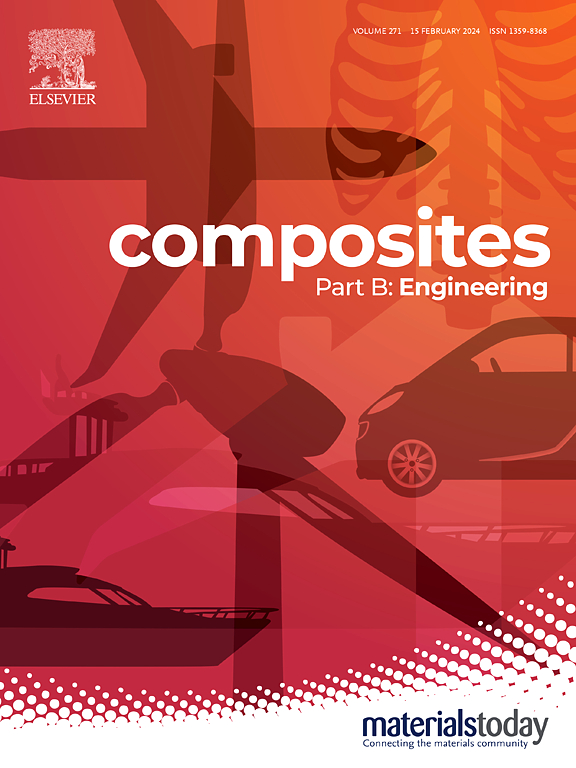A barnacle-inspired interface for enhancing the interfacial properties of carbon fiber-reinforced poly(phthalazinone ether nitrile ketone) composite
IF 12.7
1区 材料科学
Q1 ENGINEERING, MULTIDISCIPLINARY
引用次数: 0
Abstract
Carbon fiber-reinforced thermoplastic resin composites (CFRTPs) have gained significant recognition in industries such as rail transportation, aerospace, and wind power generation. Among these composites, carbon fiber/poly(phthalazinone ether nitrile ketone) (CF/PPENK) composite is considered to be a high potential CFRTP because of the exceptional thermal stability and solubility of its matrix. However, due to the smooth surface of CF and the limited number of reactive groups in PPENK, the CF/PPENK composite demonstrated poor interfacial properties. In this study, drawing inspiration from the strong adhesive properties of barnacle structures, three different interfacial phases were fabricated on the CF surface. In these composites, polydopamine (PDA) particles acted as “barnacle glue” and three types of polyhedral oligomeric silsesquioxane (POSS) acted as “barnacles”. The practicality and effectiveness of the design was initially verified by molecular dynamics simulations, which predicted optimal interfacial properties of the composite with PDA and 3-glycidyloxypropyl-POSS (EP) on the fiber surface (CF-PDA-EP/PPENK). X-ray photoelectron spectroscopy and scanning electron microscopy analyses confirmed the successful combination between the “barnacle structure” and CF. The experimental results aligned well with the simulation outcomes, validating that the interfacial properties of CF-PDA-EP/PPENK were optimal. Compared to the composites with unmodified fibers, the interlaminar shear strength and interfacial shear strength of CF-PDA-EP/PPENK were enhanced by 55.56 % and 210.73 %, respectively. This method offers an efficient and straightforward approach to the interfacial modification of the composites.
求助全文
约1分钟内获得全文
求助全文
来源期刊

Composites Part B: Engineering
工程技术-材料科学:复合
CiteScore
24.40
自引率
11.50%
发文量
784
审稿时长
21 days
期刊介绍:
Composites Part B: Engineering is a journal that publishes impactful research of high quality on composite materials. This research is supported by fundamental mechanics and materials science and engineering approaches. The targeted research can cover a wide range of length scales, ranging from nano to micro and meso, and even to the full product and structure level. The journal specifically focuses on engineering applications that involve high performance composites. These applications can range from low volume and high cost to high volume and low cost composite development.
The main goal of the journal is to provide a platform for the prompt publication of original and high quality research. The emphasis is on design, development, modeling, validation, and manufacturing of engineering details and concepts. The journal welcomes both basic research papers and proposals for review articles. Authors are encouraged to address challenges across various application areas. These areas include, but are not limited to, aerospace, automotive, and other surface transportation. The journal also covers energy-related applications, with a focus on renewable energy. Other application areas include infrastructure, off-shore and maritime projects, health care technology, and recreational products.
 求助内容:
求助内容: 应助结果提醒方式:
应助结果提醒方式:


